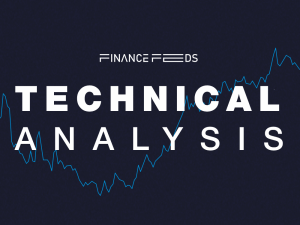Are we witnessing the Tulip Mania of the 21st century?
May the 17th century tulip mania teach us anything about the recent changes in Bitcoin prices? Paul Orford makes a point on history repeating itself.

This is a guest editorial by Paul Orford, Head of Institutional Sales at AMB Prime.
At the time of writing this article, the popular Crypto Currency BitCoin had just reached the price of around $2700 USD per coin. Much like many other people, the rocket like trajectory in its value had piqued my interest in finding out more about it.
When performing a cursory look at the charts to try and grasp some form of analysis on price direction, I could not help think about whether this was similar to the ‘Tulip mania’ experienced within the Netherlands in the 17th century.
My thought process for this began by trying to source some form of reliable fundamental data. This proved to be scant in the way of solid empirical information which I can either verify, improve or disprove by my observation. Moreover the technical analysis I am offered I tend to treat with a certain amount of healthy skepticism as the market is so new.

To give you some background to the story in case you are not aware of the state of 17th Century Dutch agriculture (it is a very small club to be in if you do!) the tulip was first introduced mid-16th century and soon became both a status symbol and a luxury item.
With the Dutch creating many of the modern techniques in modern finance, they established a market for tulip bulbs with short selling being banned from 1610 onwards. With the flower growing in popularity, professional growers paid higher prices creating further interest and appetite within this new area of speculation.
Demand then grew ostensibly due to French speculators entering the market en masse, giving upward momentum to the prices continued rise fetching hundreds of guilders and leading to the development of a futures market based on the bulb.
Reaching its peak in the winter of 1636-37 many bulbs were exchanged as much as 10 times per day without ever being physically held. With the market collapsing in February 1637 due to no deliveries being made, this resulted in the price collapsing and leaving large parts of the populace destitute and the government indebted due to their rampant and blind speculation.
The modern discussion of Tulip Mania began with Scottish Journalist Charles Mackay within his book ‘Extraordinary Popular Delusions and the Madness of Crowds’ being published in 1841. He proposed that people often behave irrationally and Tulip Mania followed the same characteristics as the South Sea Bubble and the Mississippi company scheme being used as primary examples.
The evidence that Mackay believes why this is possible, is due to it catching the attention of the entire nation. He goes further by outlining the extent of the mania by describing it as “the population, even to its lowest dregs, embarked in the tulip trade”.
Mackay notes that one transaction took place of 100,000 Florins for 40 bulbs. To put this into context in that era, 1 ton of butter would have cost around 100 Florins and a skilled laborer would earn between 150 – 350 Florins per year.
By the very nature of the Internet the communication and information that is passed on us via this medium has perhaps made the Netherlands writ large, where we are constantly bombarded with ‘evidence’ to say why it won’t stop until $10,000 USD per coin with little or no fact to back this up.
To use Mackay’s terms and methodology we could be moving into a global mania with little credible reason to understand why the price is rising.
I am not looking to argue the rights or wrongs of crypto transactions, and for what it is worth I think it is the next step in our financial evolution. Moreover, I was more intrigued to see the similarities of a dramatic increase in the price and the actions of the participants within it.
I think when looking at BitCoin in the short term, it maybe pertinent to remember the 20th century’s leading proponent in American Liberalism JK Galbraith. In his work entitled “A Short History of Financial Euphoria” he isolated the four trends which he believes signify investment mania.
- The investors lose sight of risk and focus only on the rewards.
- A belief that there are new circumstances in the world that justify higher than normal valuations.
- The illusion that despite temporary setbacks, values are certain to continue rising.
- Condemnation of those who express doubt or dissent to the currently bullish view.
Needless to say all four of these indicators are prevalent within this market if you are looking to utilize it for speculative purposes, rather than use it for its transactional raison d’etre.
Although I do expect to get people to send me lots of option four via private messaging and tied to bricks being thrown through my window. I think it is always pertinent to look back at some of the lessons history has taught us to perhaps guide us for the future.
Alternatively, you can shave the cat and sell the fur and go all in…the choice is yours.









